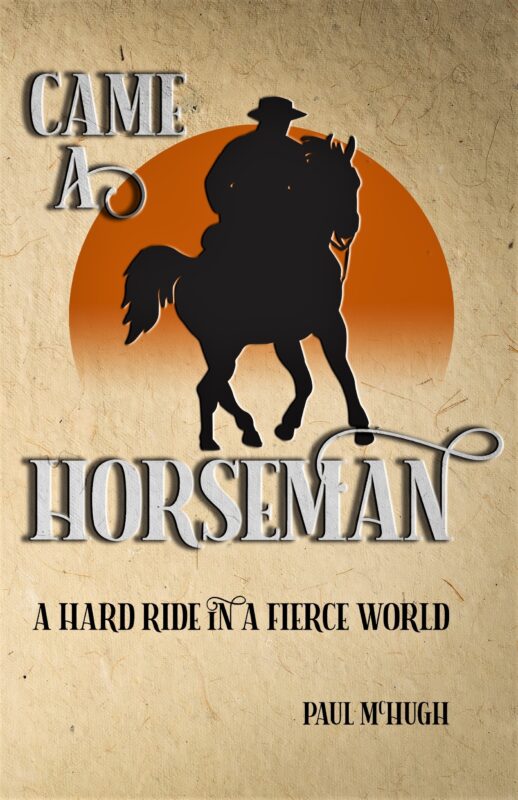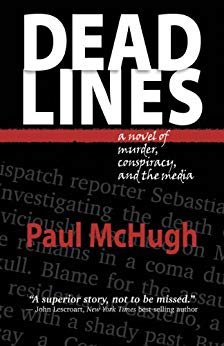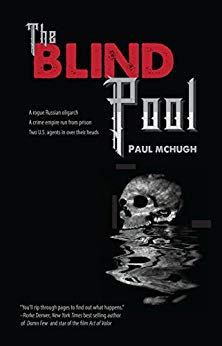Paul McHugh, San Francisco Chronicle Outdoors Writer
A Sea Kayak Voyage along California’s Pacific Shore
400 miles in 40 days
September 4 through October 5.
Author’s Note: This series of stories made a dramatic highlight project during my two-decade career at the Chronicle. On its tenth anniversary, by prior agreement with the paper, I re-present the stories, including new photos and material.
Posted here are the first days between September 4th and 11th. The following days along the coast to our day of arrival at San Francisco will be posted weekly until our paddle under the Golden Gate Bridge on October 5th.
September 4 (two days prior to launch)
The Dangerous Beauty of the North Coast
A sinking sun silhouettes sea stacks near Crescent City off California’s North Coast, a mostly rugged 400-mile stretch of natural beauty and small-town culture.
One must breathe deep, swing arms wide, then fully embrace adventure before launching a 400-mile sea kayak voyage down California’s North Coast. John Weed, Bo Barnes and I will do exactly that on Tuesday morning.
We plan to kayak along this region’s most remote reaches, sharing our discoveries with Chronicle readers, as we paddle from the Oregon border to San Francisco Bay.
The North Coast’s natural beauty is widely celebrated, but far from fully grasped. Driving through it is no way to do that. But creeping along under paddle power is a unique opportunity.
This region has a distinctive human topography too, blending new settlers with direct descendants of the pioneers, and Indian tribes crafting a path through the 21st century. The way these denizens settle resource and cultural issues may hold lessons for us all.
Besides, this is my 20th year of providing outdoor sport and environmental coverage for readers of The Chronicle. I love the drama of the North Coast’s rugged shoreline, deep forests, and the culture of the small towns up there. This is a chance to steep myself in those things to a fare- thee-well.
My team and I will make our journey along this occasionally quite wild shore in increments. We’ll cruise at a 3 mph pace under average conditions, perhaps exceed 5 mph if current, wind and wave combine in our favor — something offshore fishermen term “going downhill.”
Of course, should conditions turn adverse, we may have to find a cove where we can hole up or be forced to battle our way through.
Big waves, harsh wind, dense fog, rough rocks, mean sharks. But any hazards we meet still won’t match those that met pioneering travelers — such as Jedediah Strong Smith, California’s greatest overland explorer.
As my companions and I set out Tuesday morning from the mouth of the Winchuck River in southern Oregon, we’ll feel that we stand pretty close to the moccasin tracks of Smith, who camped with his little band of fur traders on that exact site in 1828.
This plucky chap had to survive two strong attacks by American Indian tribes, assaults by grizzly bears, and bouts of near starvation to reach this point.
As we punch heavily laden sea kayaks out through surf at the river bar, we’ll reverse the land route that Smith blazed north from San Francisco (then known as Yerba Buena port) with his pack horses.
We hope that we can travel with just a smidge of the dauntless spirit and cultural openness of our hero, who left behind maps that proved invaluable to those who would follow, as well as a journal that recorded the observations of a keen and sympathetic eye.
Smith made primary reports on Indian tribes “before they were pulverized by advancing civilization,” wrote biographers Dale Morgan and Carl Wheat. “He described them with care and attention, and with a degree of compassion not common in his time.”
Virgin Forest. Sparkling Streams.
We can’t admire endless virgin forest, sparkling streams and abundant wildlife to anywhere near the degree that Smith did. But we will be able to traverse the most pristine areas left on our coast. We hope to take a measure of our times by exploring this gorgeous landscape, and many of the changes wrought between Smith’s pioneer era and our own.”
Coastal wilds Smith penetrated have grown wreathed with roads, dotted with towns, thick with settlers and their works.”
But tribes for whom Smith was the first contact — the Tolowa, Yurok and Wiyot — still live on parts of their ancestral ground. We can meet them, hear how they seek to reclaim old ways, even as they join all the rest of us in also striving to master challenges of the 21st century.”
The formerly easy harvests of lush forests and thronging fish have given way in our time to struggles to preserve remnants, to restore resources where possible, and to devise new economies where it’s not. And so we’ll also meet up with citizens of the newer communities, where the can-do spirit and self- reliance of the pioneers still surface in modern times, as they work to craft a life in isolated locales.”
Forage. Fish. Camp.
We’ll forage, fish and camp — and sample the culinary delights of the occasional waterfront village bistro. We figure about 40 days for the voyage, paddling up to Crissy Field beach in San Francisco on or around Oct. 16. The trip will include a few layover days, in the most attractive locales and hidden coves we can find.
About 72 miles of this coastline remain rough, remote and roadless. About 26 of them are along the reach famed as the Lost Coast, north of Shelter Cove — though it has certainly been “found” by hikers in recent times. The 16 miles south of Shelter Cove may be wilder now, as are bits like the 12-mile reach north of the mouth of the Klamath River, and an 8-mile stretch along the mouth of the Eel.
But we also look forward to making landfall in charming coastal towns such as Bodega Bay, Point Arena and Mendocino.”
So, let’s not kid ourselves here. Our trip should be an ongoing mix of the sublime and the Spartan.









